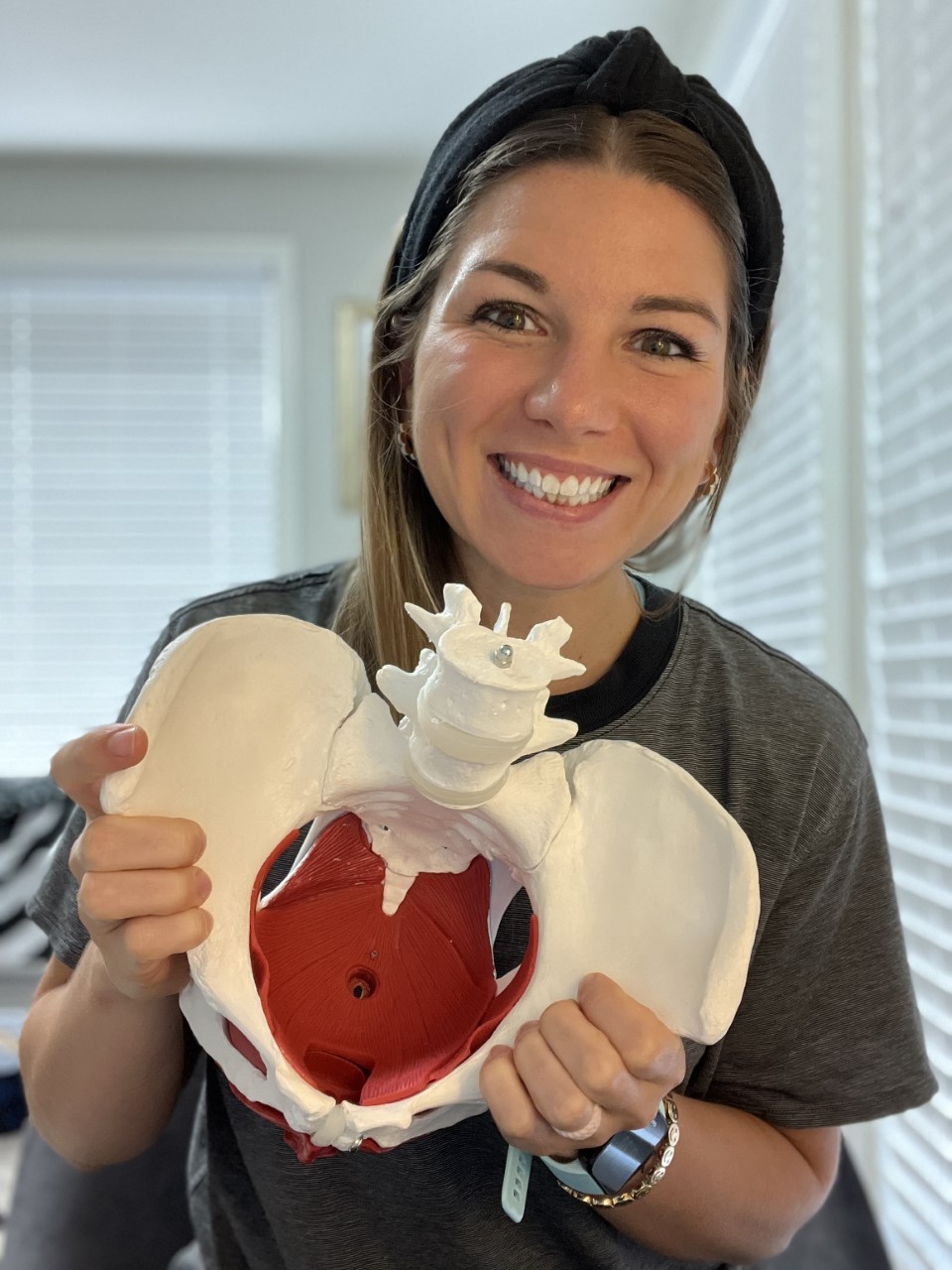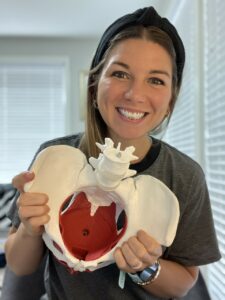Pain in the what? by Dr. Hailey Jackson

Pain in the What?
I’m sure you’re aware of the pain referral pattern that people experience during a heart attack— typically shoulder pain, jaw pain and potentially pain between the shoulder blades. This is called referred pain. Though nothing is actually wrong with the shoulder or jaw, that is where people experience pain with a heart attack.
Similarly, the pelvic floor muscles, or muscles deep within the pelvis, have common pain referral patterns. This means that if you have trigger points or tender points within the pelvis, you could potentially feel these in various places other than the pelvic floor.
The most common pain referral patterns I have seen in practice include lower abdominal pain, hip pain, pain in the rectum, tailbone pain, and low back pain.
 The lower abdomen and pelvic floor muscles are connected through fascial tissues (fascia is the white part of the chicken you trim before cooking), and I see this referral pattern commonly in patients who have undergone major abdominal surgery and have scar tissue present.
The lower abdomen and pelvic floor muscles are connected through fascial tissues (fascia is the white part of the chicken you trim before cooking), and I see this referral pattern commonly in patients who have undergone major abdominal surgery and have scar tissue present. One of the pelvic floor muscles, the obtuator internus, functions as a hip rotator, and patients commonly experience hip pain with trigger points/tender points in this muscle.
All of the muscles deep within the pelvis attach to the tailbone, and are very close in proximity to the rectum, thus the pain perceived to be rooted from the tailbone and/or rectum. The most common descriptions I hear with rectal and/or tailbone pain that is rooted in the pelvic floor muscles are “it just feels like I am sitting in on a golfball” or “it feels like I have a golf ball in my rectum”.
Last but certainly not least, low back pain. Several of the nerves that course through or around the pelvic floor muscles originate in the lower spine, so pain perceived to be in the low back could very well (and often is) coming from taught muscles in the pelvis that are irritating these nerves.
Due to the complexity of this area of the body, a 1-on-1 evaluation is absolutely recommended to find the root of your perceived pain and allow you to find lasting relief.
To find out more, call 903-962-2600, follow @thepowerfulpelvis on Instagram, or learn more at www.txpelvichealth.com.
 Instagram: https://www.instagram.com/thepowerfulpelvis/
Instagram: https://www.instagram.com/thepowerfulpelvis/Facebook: https://www.facebook.com/thepowerfulpelvis













